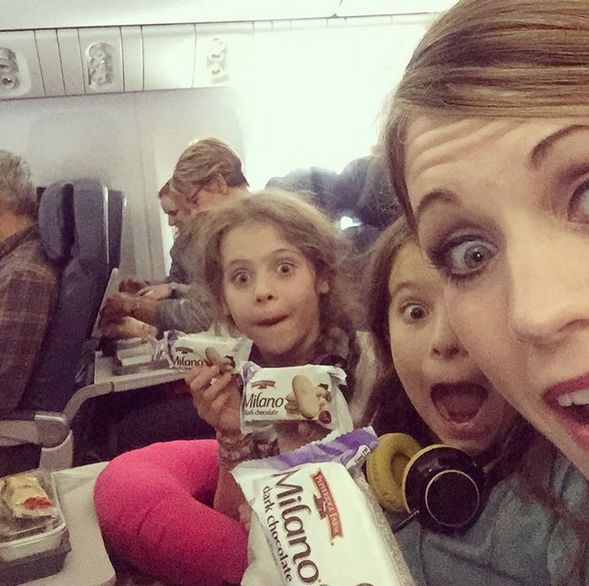
I’m interested in the practical aspects of food on your international trips. I’d love to hear what you bring with you and what suggestions you have. I eat very carefully for my system to function well, from necessity. We went on a family mission trip last fall where we had no access to a grocery store. The meals were prepared for us and my system didn’t like it (not very healthy food with very few fruits and vegetables). We are going again next month and I’m trying to plan what to bring that is allowable in my suitcase (even like a hotpot and oatmeal). Thanks. -Karen D.
That’s such a great question! And in the multiple international trips I’ve taken over the past two years, I’ve definitely discovered that it can mess with your system — especially if the food is very different than what you’re usually eating, if your sleep is interrupted and fitful because of big time differences, and if you’re tired because of not getting enough sleep and long days.
I’ve learned a few tips that have made a big difference for me in how I feel while on international trips:
1. Drink Lots of Water
Every since I quit coffee (going on 10 weeks now, can you believe it??), I’ve been drinking a lot more water. In fact, I aim to drink 1 and 1/4 gallons of water every day.
This felt like a massive amount of water in the beginning, but as it’s become more and more normal for me to drink this much, I’ve noticed that I’m a lot thirstier and it’s becoming an ingrained habit to have downed at least 3/4 of a gallon of water by early afternoon!
There’s so much more I could say of the benefits of no longer being dependent on coffee and how much healthier and more energetic I feel by completely changing my eating as well as drinking a lot more water, but I’ll save that for another time. What I did want to say is that when we went to South Africa recently, I made drinking a lot of water a huge priority and I noticed a big difference in how I felt overall — not only did I have fewer stomach and digestive issues, but I also had more energy and slept much better.
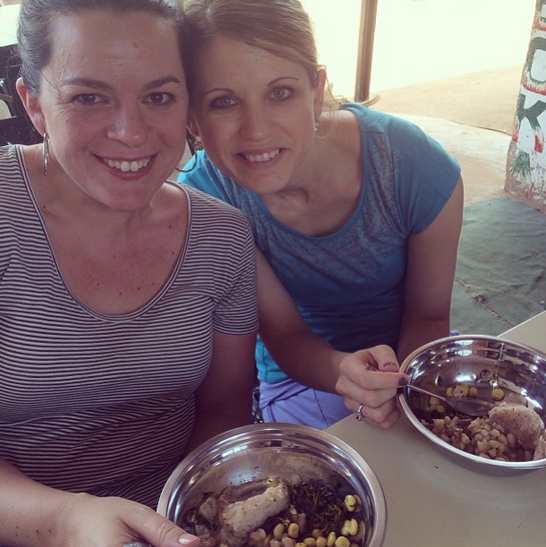
I brought a water bottle with me everywhere I went and filled it up every opportunity I had to refill it. Because we were staying at a location that had good water, this worked well. When we were out and about during the day, we brought extra water bottles with us.
If you’re going to be somewhere where you won’t have access to really clean and safe water, I’d recommend bringing a water bottle with a filtration system, asking the locals what water is safe to drink, and also buying some extra bottled water at the airport in the states and just carrying them on the plane with you. It’s not great to have to lug them with you on the flight, but it’s a way that you’ll have some backup water bottles if you aren’t able to readily have access to good drinking water for parts of your trip.
2. Get as Much Rest as You Can
Your body needs sleep in order to digest your food well, among a number of other very important things. When you don’t get enough sleep — especially while traveling internationally — it can wreak all sorts of havoc on your body and inhibit your ability to really be able to make the most of your trip.
If possible, try to work out your sleep on flights so that it adjusts to what time zone you’ll be in. This has been very helpful to me on my last two trips, especially. I will keep myself awake for as long as I can so that my body more easily switches to a new time zone.
I’ve tried a LOT of different things when it comes to sleeping on long flights and the thing that I’ve found to be most helpful is to wear comfortable clothes, use an eye mask, put comfortable headphones or ear plugs in, bring your own travel blanket, and use a travel pillow like this one. I prop my feet up on my backpack, drape the blanket over me, put my seat back (the little amount that it will lean back in coach!), put my headphones in, snap the travel around my neck, and then put on the eye mask.
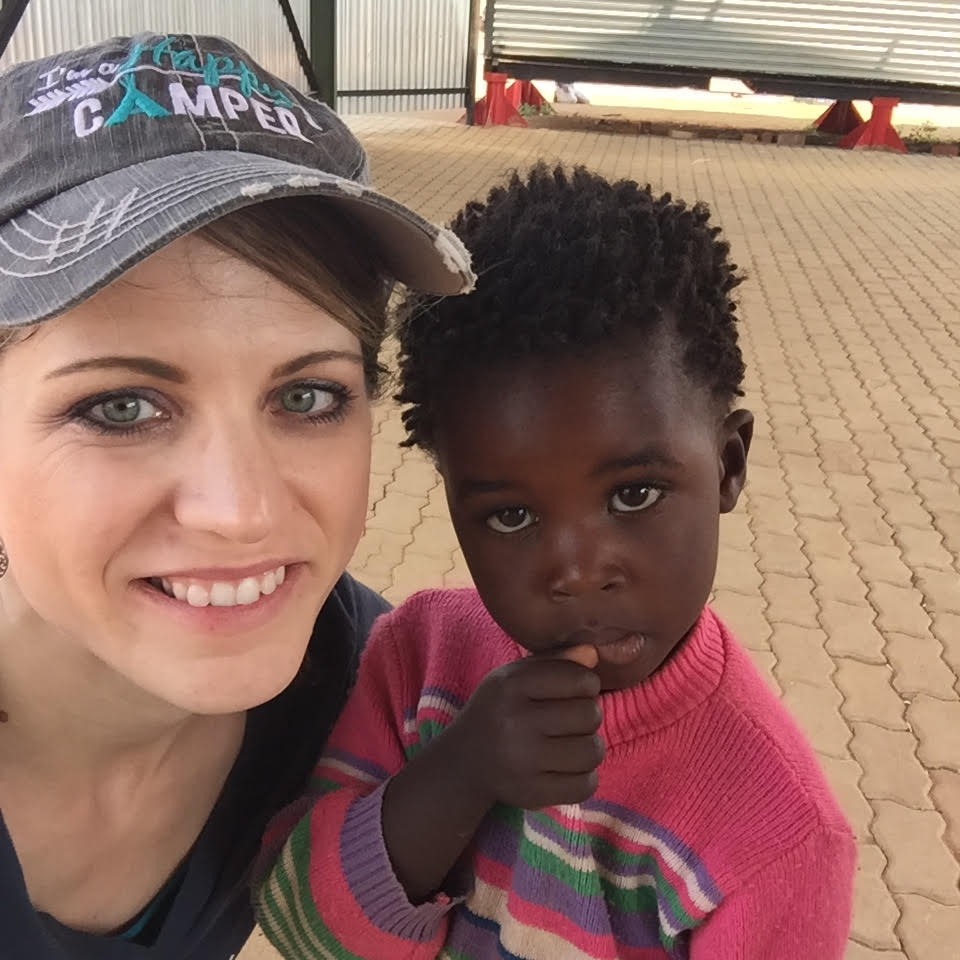
I’m able to sleep pretty well like this. It might not work at all for you, but I’m grateful that I can usually sleep at least 6-8 hours on a 15-hour flight to South Africa. It makes a BIG difference!
Last time around, I used this Non-Drowsy Natural Dramamine for the flight and it caused me to be a little sleepy, took away the motion sickness, but kept me from feeling completely drugged like regular Dramamine makes me feel.
When we get to our destination, I try to acclimate to the time zone as quickly as possible by only letting myself sleep during normal bedtime hours. I know that it can be tempting to want to crash at 2 p.m., but unless you’re someone who can take short naps very successfully, I’ve found it’s better to push through and make myself stay awake until at least 8 p.m. so that I can hopefully get a good night’s rest at normal bedtime hours for that time zone.
If you’re on someone else’s time table and schedule, at least try to make sure that you’ll have at least some days on the trip when you can wind down early and sleep in, if need be. I also will occasionally take some kind of sleeping aid if I’m really struggling to sleep.
Last trip, because I followed the above protocol (and was no longer drinking coffee!), I actually didn’t have any trouble sleeping at all! Which was my first international trip to not have any sleeping issues on!
3. Choose the Best Food Options You Can
You might not have a lot of food options for some (or all!) of the meals, depending upon the nature of your trip. But in many cases, you’ll at least have some options — and when you have options, choose the best options you can.
If someone is offering you food that you’ve not eaten before and it would be unkind to refuse it, you can always say, “Can you just give me a really small serving?” Or say something like, “Thank you so much. I’d love to try a little bit!”
When you have the option to eat food that you know will sit well with you, eat that. If it’s food that you feel is a little risky, take the smallest serving you possibly can while still being polite to your hosts and then eat your own snacks when you get hungry (Obviously, eat your own snacks at some time when you can do it discreetly so you’re not being un-gracious to your host… I’ve even eaten in bathroom stalls before! Sometimes, you do what you gotta do!)
4. Bring Your Own Snacks
One of the lessons I learned from my trip to Israel and Italy earlier this year is that you should always bring some snacks on international trips — especially if you’re someone prone to stomach and digestive issues.
This last time around, I made up 30 baggies of homemade trail mix — with dried fruit, nuts, and a little coconut and cinnamon. I also brought lots of Wasa crackers.
I ended up not needing as many snacks as I thought I would need, but I was so happy to have them available in my backpack as backup when we were out and about throughout the day or for an early morning breakfast if I woke up a few hours before breakfast was available at the lodge we were staying at.
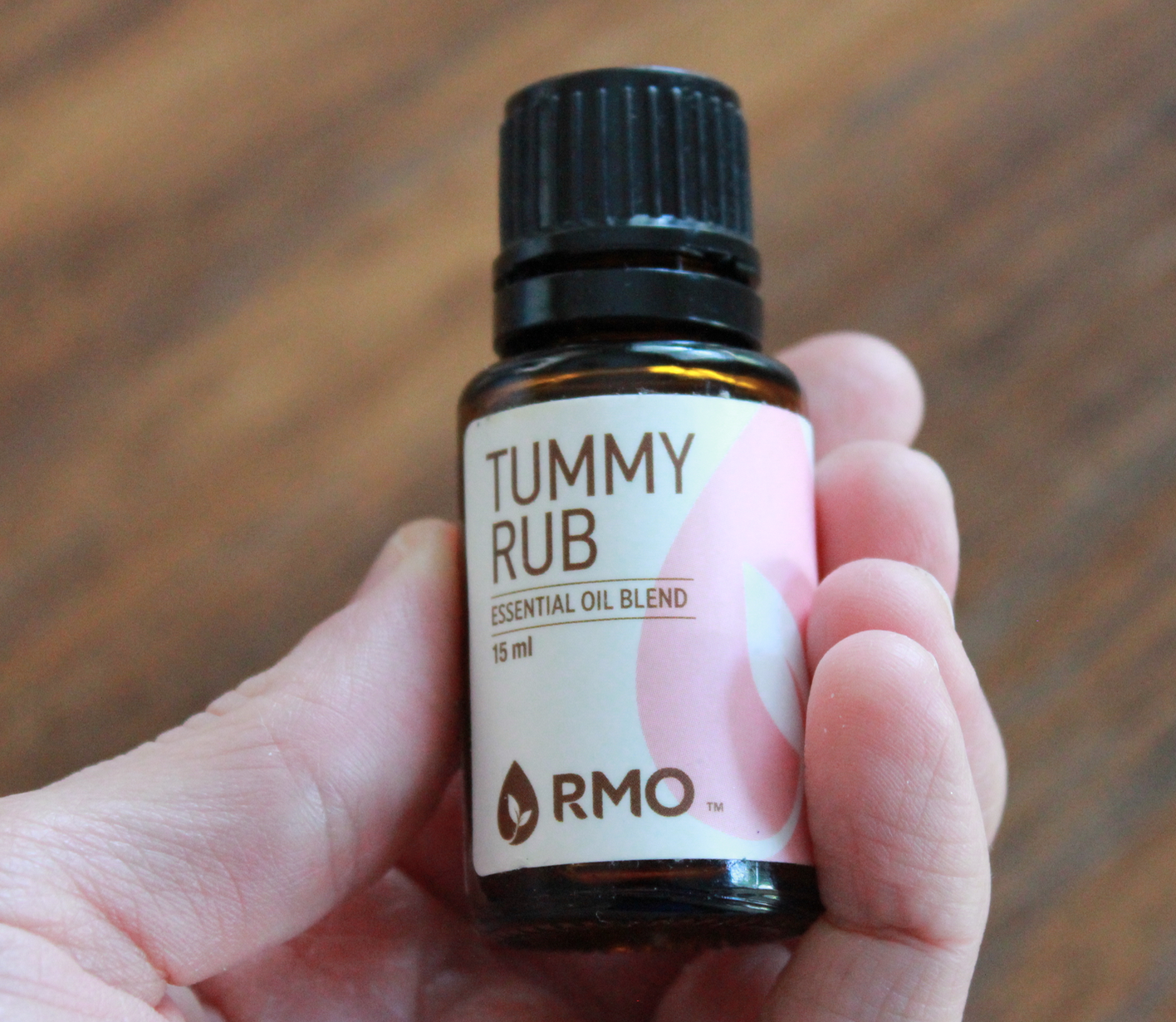
5. Get Some Tummy Rub
I cannot sing the praises of Tummy Rub highly enough! This is a blend of popular oils assists your digestive system.
If you’re feeling sick to your stomach, if you have diarrhea, if you’re feeling constipated, or if your stomach feels off, massage a few drops onto your abdomen area in a clockwise direction to help alleviate symptoms. (This oil blend is already diluted with 70% coconut oil so you don’t need to worry about diluting. However, you can also make one of the recipes listed here.) I usually will apply it 2-3 times throughout the day until the symptoms clear up.
This is one oil — in addition to Thieves and OnGuard — that I will never be without on a trip. I can’t tell you how many times it’s helped our family with stomach issues!
What advice or input do the rest of you have for Karen? Leave a comment with your input!
P.S. I want to bring back the Q&A posts I used to do — maybe even on a weekly basis. If you have a question you’d love for me to answer in a post (on any topic), leave a comment on this post and I’ll consider it for a future post!
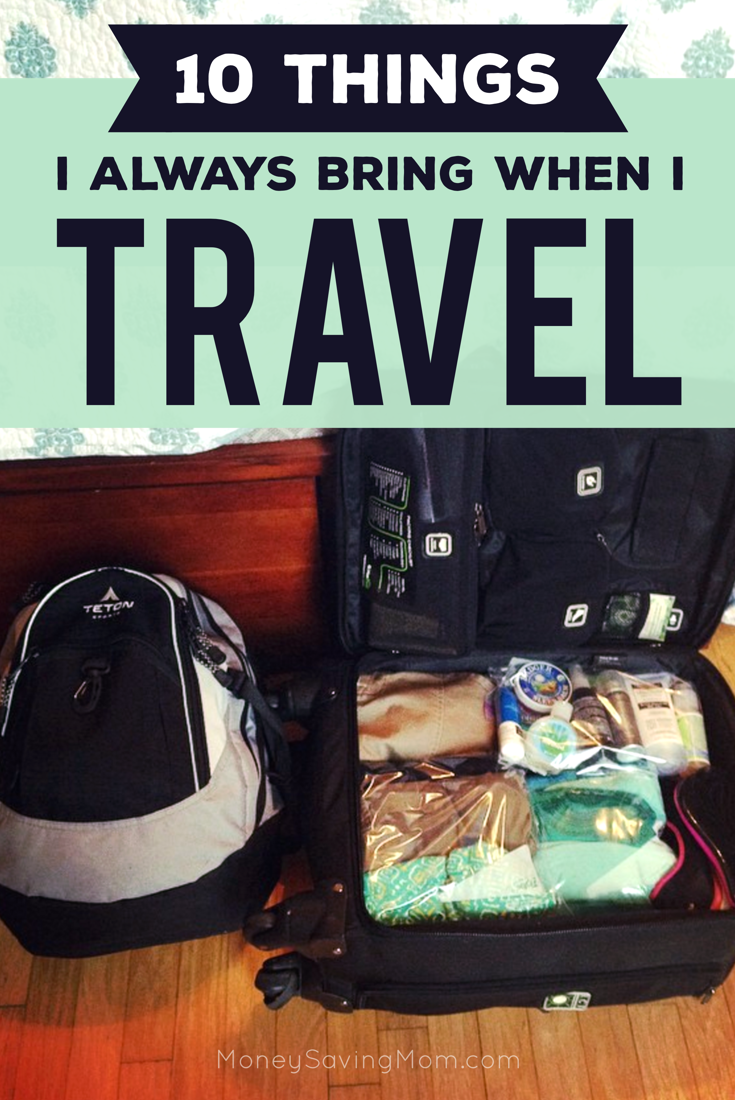

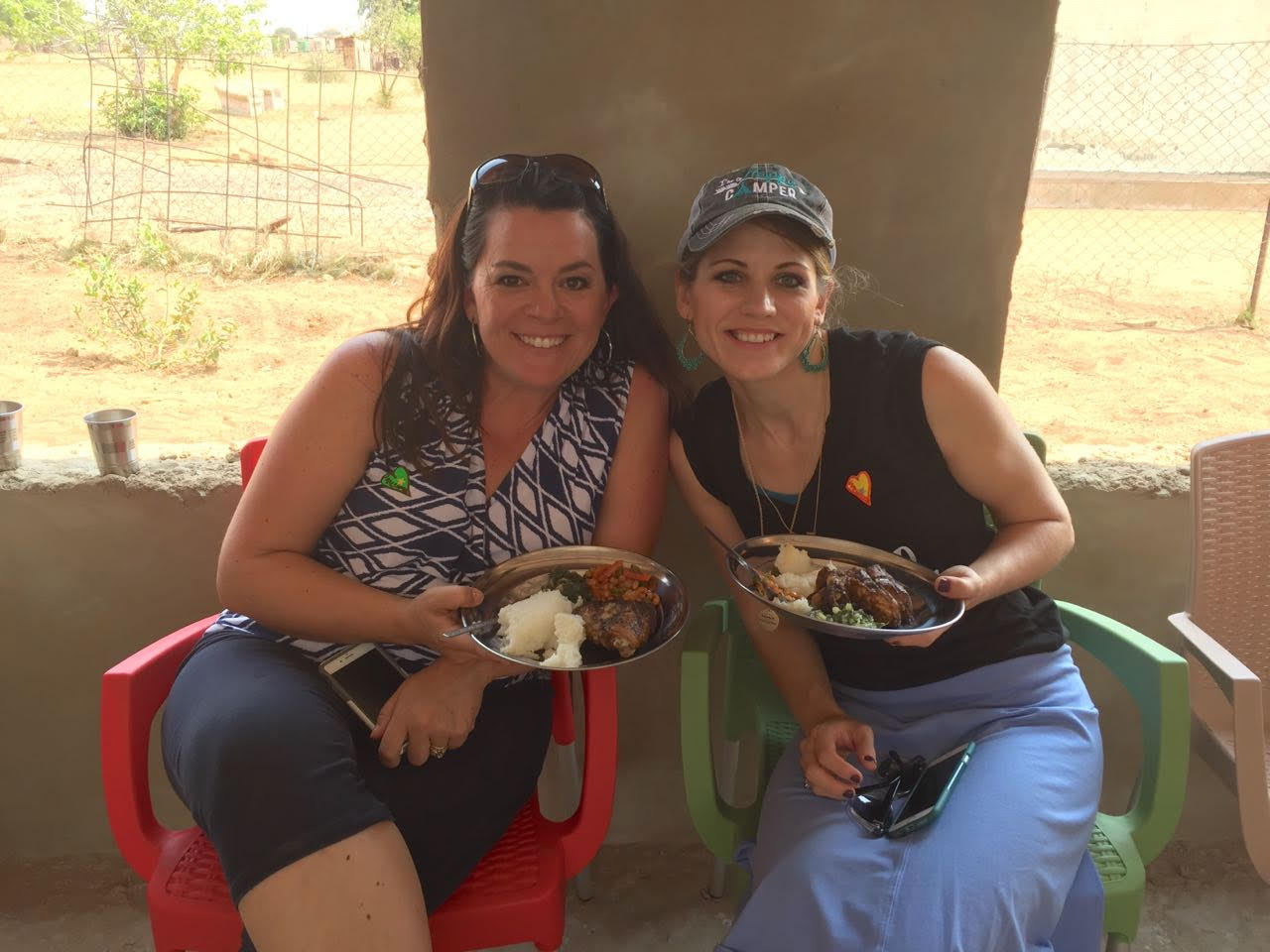
I enjoyed your article! I have a question about number four. Flying from America to Italy, you were able to pack food from home into your suitcase? Did you pack it in your carry on or checked bag? Thank you!
I didn’t check a bag. So yes, it was in my carry-on. 🙂
I enjoyed reading your article. I have celiac so I never go anywhere without food I know I can eat. When traveling internationally, about half my bag is filled with gluten free snacks and bars, even if I’m only bringing carry on. I can wash my clothes, I can’t go without food. 🙂
Crystal,
Do you use a carrier oil with the tummy rub oil? I would love to try this and wondered if it can be used directly in the skin.
The Tummy Rub is an oil blend, so it already has coconut oil mixed in so you can use it directly on your skin without having to dilute it.
OK….I have to bring it up but drinking tons of water on vacation makes me cringe at the thought of all those bathroom runs — especially when touring and bathroom access is not a given. Have you found this to be a problem? It’s the same thing with road trips here in the USA, I find I don’t drink as much as usual to avoid all the frequent stops and less than ideal gas station bathrooms. Ugh!
Just to be upfront: it’s pretty normal to have some stomach upset any time you travel overseas until you become acclimated to the food/bacterial flora. We’ve lived most of the last 5 years in Asia and now we have more trouble when we come back to the States than we do when we travel to Asia! A couple things we do/recommend, especially in a developing country (in addition to what was listed) is to take a good probiotic and to avoid raw fruits and vegetables. I’m not sure if it’s the soil the veggies are grown in or the water they are washed in but uncooked produce can be a big problem until you’re used to the local flora. Fruits that can be peeled (bananas and citrus) are usually fine but otherwise it’s better if it’s cooked.
YES. Great tip here…on the probiotic (start taking it even several weeks prior to your trip) and the fresh fruits and veggies. Be very careful!
Hi Crystal. Is there a post where you’ve shared the process you used for giving up coffee? I need to do the same and was hoping you would share how you accomplished it. I know it isn’t the topic of this blog post but since you mentioned it …
Such great tips Crystal.
Depending on where you are western water bottle filters do not filter out the water good enough. We brought someone to India with us who insisted that she could drink anything through it and drank water from our jungle areas. She got EXTREMELY sick. Water is often what gets people. Either you do not drink enough or people forget things like brushing teeth. I am horrible about this and have had every amebia and paresite. I always suggest asking locals what is a safe water to drink and get bottled. Also powdered Gatorade is wonderful replacement if you loose electrolytes.
When we go to India we know not everyone can handle the food 100 percent of the time. We suggest the following when we lead international teams.
Jerky
Trail mix
Nutrition type bars (avoid chocolate in hot climates such a mess lol)
Oatmeal packets
Instant soup packets
Such great tips!! Thank you so much for sharing!
I am not an oils person, so cannot comment there…but it does strike me that the ones you listed have a lot to do with smell. So it would make sense to have something with a strong spicy scent to distract your senses. Maybe peppermint essence for sickish feelings or nausea…or lavender? The latter is by far my favorite. It would keep your suitcase smelling not only better…but familiar. (Helps with homesickness.)
Something that we used in both Mexico and Panama: a teaspoon of Pepto-Bismol once a day (or a tablet). It helped keep our digestive systems steady — and no Montezuma’s Revenge.
Also, if I was drinking that much water, my system would have to adjust to wherever I was….the U.S., ireland, South America, on a cruise, etc.. I always have a little of stomach uneasiness the first day or two, as my system gets used to the water. (It’s different wherever you go — and I don’t see how you could possibly bring enough for the whole trip.) Then everything smooths out. (The Pepto helps here, too.) A few of those Crystal Light tubes of powdered drink might be a nice addition for water that tastes ‘weird.’
Sorry, Crystal — I’ll still be drinking coffee! Tea, too. These types are so distinctive in each country; it would be a shame to miss another unusual taste. (Also helps with the water issue, especially the tea.)
Snacks are fine — but again, they should be familiar ones — and some should be able to be a replacement for a missed meal. (Like protein bars, nut mixtures, etc.) And if they’re commercially packaged, it shouldn’t be an issue, bringing them into a country.
I’m glad you mentioned respecting your hosts’ feelings. You can insult them terribly by refusing to eat any of the food…and if your trip’s purpose was to help them, you’ve just shot yourself in the foot for the rest of the trip.
Just think how you would feel if you’d gone to the trouble of preparing a nice (at least to you) meal — and your guests march in, announcing that they can’t eat anything you’ve made. How hurt would you be…
I SO agree that it’s 100% important to respect your hosts’ feelings and the hard work and effort they’ve put into creating meals/hosting/serving you. Unless it’s something that you are fiercely allergic to, I always think you should eat whatever is set before you with graciousness and gratitude. It’s worth a little discomfort if it means showing respect and gratitude.
Great post! I lived in Asia for 5 years and traveled internationally a lot pre-kids. I totally agree with staying well hydrated, your tips for sleeping on an international trip, and packing some snacks! Best snacks will vary of course based on dietary needs. Your trail mix idea is a good one! I’m low carb so for me, salted almonds or Quest bars (or similar) can be great and easy to pack.
Great snack ideas! Thanks so much for sharing!
Great tips! It’s a wonder what simple things like sleep and water can do for a person!
YES! So true!
MOst countries i have been to won’t let you bring open food items into the country. Crystal may want to check the legality of that trail mix next trip! 🙂 We always bring some snacks, with the exception of heading to Australia. We were gone for 3 weeks and only brought carry on luggage. Space was a premium, and food didn’t make the cut.
I think South Africa isn’t as strict because they don’t have rules like that. I didn’t try to bring food with me to Italy/Israel, so I’m not sure on their rules. However, I know that some countries definitely do have rules — such as the US (you can’t bring meat or fresh foods of any kind back into the country from another country).
I have celiac disease and also eat 100% Paleo. I get very sick if I have any gluten, and my body does not like dairy, soy, etc. I always pack my own food when I travel, but I have only traveled domestically.
When I take road trips, I cook a lot of food ahead of time and then pack leftovers in a large, wheeled cooler with a bunch of ice packs. I replenish the ice from the ice machine in whatever hotel I’m staying in or I purchase some from a gas station/grocery store if needed, like if I’m camping. If camping, I take my camp stove and frying pan to heat food. If staying in a hotel, I book one with a fridge and microwave, or, if one is not available in the area in which I am staying, I take my electric skillet.
I typically take my electric skillet when road tripping for extra insurance; once a couple of years ago I booked a hotel with a fridge and microwave. When I got there, I found there had been a mistake when they booked my room and I ended up in one that did not have those items. The rest of the hotel was fully booked, so I could not switch rooms. I was so grateful for my cooler and skillet that trip!
When I fly, I pre-make whatever food I enjoy and then freeze it solid so the TSA won’t give me any grief over liquids. I also have a doctor’s note stating I need to take my food with me in case they give me a hard time, although luckily I have never needed to use it (but my cooler almost always gets searched by hand). I typically freeze the food in plastic freezer bags so it doesn’t take up any more room than it absolutely has to so I’m able to fit more inside the cooler. I have a small cooler I typically take my lunch to work in which is able to fit 9-12 meals inside if I pack carefully. The cooler is small enough that it takes up about 1/3 of the space in my carry-on; I then pack my clothing and toiletries around it in the remaining space. I wouldn’t want a checked bag to get lost with my food in it! Since I have only traveled domestically, all the food is still frozen once I arrive at my destination. I then follow the steps above for taking food while road tripping.
Finally, I pack a lot of snacks, such as Larabars, nuts, fruit, jerky, etc. I always, always pack extra food. You never know when your car might break down, or your flight will be delayed, etc. I would rather have to survive with some healthy snacks for a day or two rather than take a chance on getting sick eating out. Plus it’s cheaper! 🙂
That’s so true about it being cheaper! And thank you for the tip on freezing foods — brilliant!
This is such an awesome list and one that I’ll incorporate the next time I go on an international missions trip (esp to a third world country!!). The only other thing I would add is to being activated charcoal cap let’s with you. As long as you’re not dehydrated, it helps tremendously with stomach upset issues. I’ve even used it for the stomach bug and given it to my kids when they’ve had tummy troubles.
Have a great trip!!
Oh! That’s a great tip! Thank you so much for sharing!